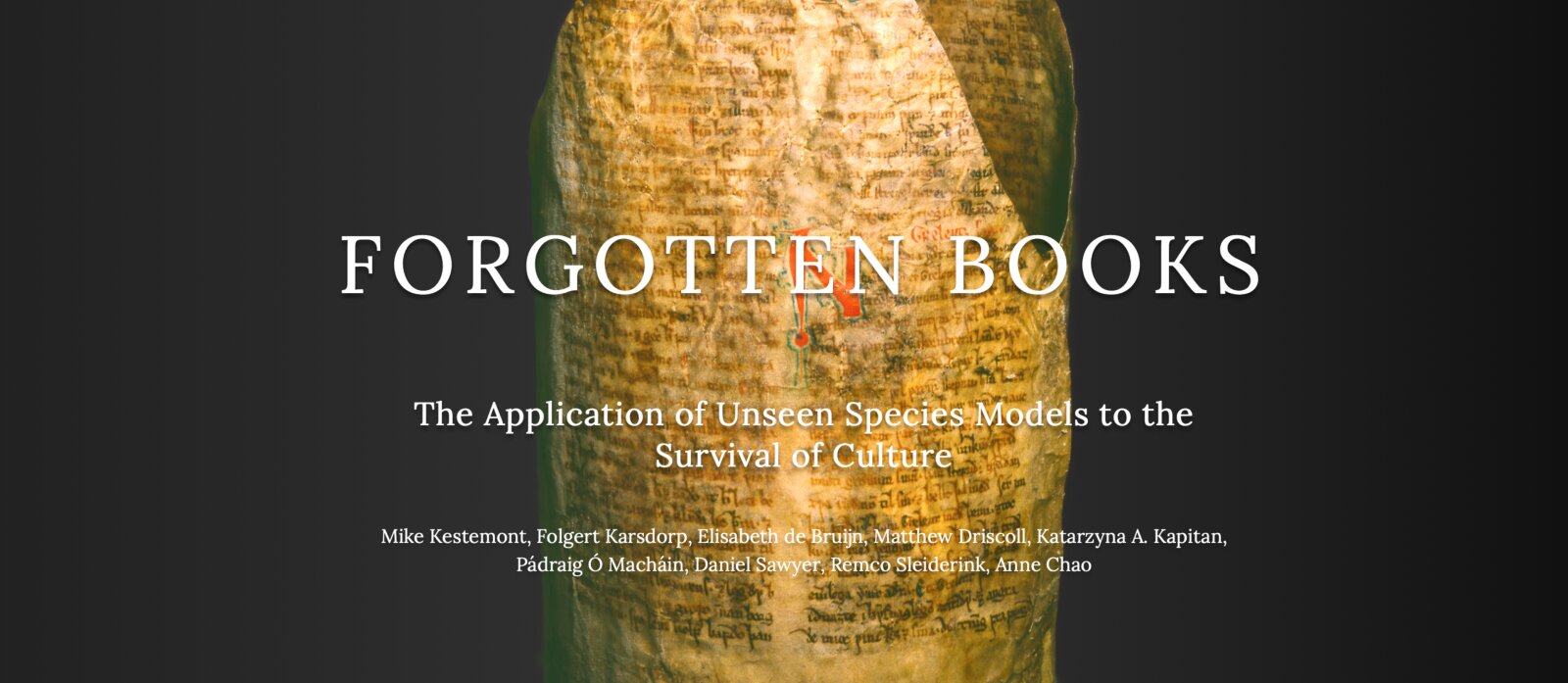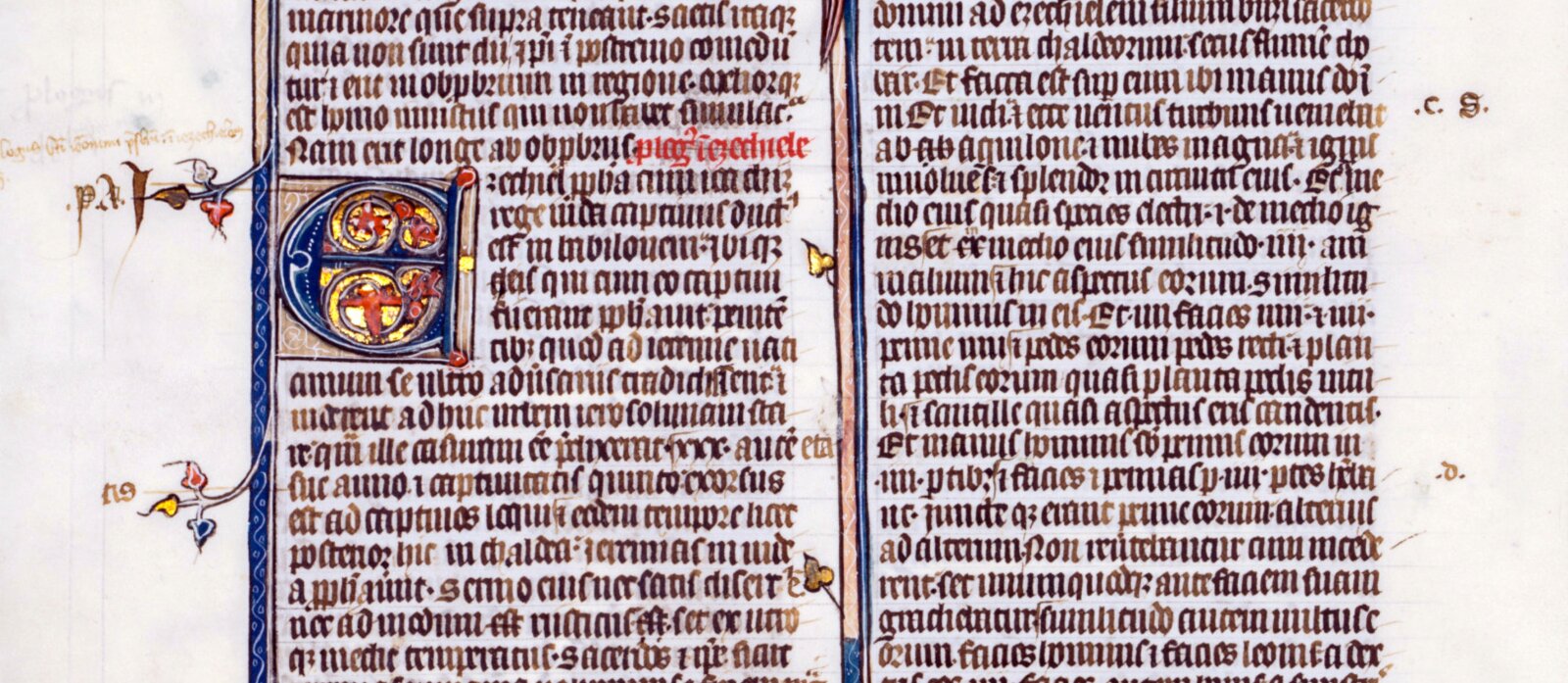How much medieval literature did we lose?
Mike Kestemont and colleagues – including Remco Sleiderink and Elisabeth de Bruijn from ISLN – have published a research paper in Science. They used a statistical model from ecology to (begin to) answer the fascinating question: how much medieval literature has been lost to us?
They found that a third of medieval European literature has been lost:
- 90% of European manuscripts from the Middle Ages are missing
- 80% of works in German, Icelandic and Irish survive
- Fewer than 50% of Dutch, English and French works remain
Stories of Vikings, monarchs and thrones may dominate streaming services, but an international team of researchers has found 32% tales of medieval chivalry and heroism have been lost. And, applying species modelling from ecological studies, the interdisciplinary team estimates more than 90% of European manuscripts from the Middle Ages are missing. Made up of scholars from 12 research institutions, the team has today published its findings in the journal Science. They calculated the scale of the lost literature using methods more commonly found in ecology – where researchers estimate how many rare species are missing based on the surviving numbers.
One of the lead authors, Mike Kestemont, professor of computational humanities at the University of Antwerp, says, ‘We suspected ecologists’ statistical methods to predict numbers of rare species - the ones they never see in their data - could be used to estimate numbers of lost literary works.’ ‘So we treated literary works as species, and the surviving manuscripts as sightings of a species. This allowed us to estimate what has been lost.’
The team calculated the survival rates for six medieval language areas separately and observed that there are huge differences in these survival rates within Europe. Some 80% of works in German, Icelandic and Irish have survived, whereas for Dutch, English and French literature fewer than 50% of works are still known. Another lead author, Folgert Karsdorp, researcher at the KNAW Meertens Institute (Netherlands), says, ‘We also discovered that the original evenness of island literatures such as Ireland and Iceland was higher.’ He explains, ‘Evenness’ is, again, a concept we borrow from ecology, implying that there is a more even distribution of copies over works so that the differences between the most popular and least popular works is smaller. A more even distribution makes a cultural system more resistant to dramatic loss in the event of external forces, such as library fires.’
The team believes its work opens up a new line of research in the study of human cultures of the past. There is nothing specific to ecology or medieval literature about the method used. Its applicability is far wider, and could be used across the heritage sciences to study topics such as ancient coins, fairy tales or even forgotten painters.
Involved researchers:
- Prof. Mike Kestemont, professor of computational humanities (University of Antwerp)
- Dr Folgert Karsdorp, researcher specializing in cultural evolution and computational humanities (KNAW Meertens Instituut)
- Dr Elisabeth de Bruijn, research fellow, specializing in Dutch and German chivalric romance (Ruhr-Universität Bochum / University of Antwerp)
- Prof. Matthew Driscoll - professor of Old Norse philology (University of Copenhagen)
- Dr Katarzyna Anna Kapitan, research fellow specializing in Old Norse literature and book history (Linacre College, Oxford)
- Prof. Pádraig Ó Macháin, Professor of Modern Irish (University College Cork)
- Dr Daniel Sawyer, research fellow specializing in early English poetry and manuscripts (Merton College, Oxford)
- Prof. Remco Sleiderink, professor of Dutch literature, specializing in fragmentology (University of Antwerp)
- Prof. Anne Chao - Tsing Hua distinguished chair professor specializing in ecological statistics and biodiversity analysis (National Tsing Hua University, Taiwan)

